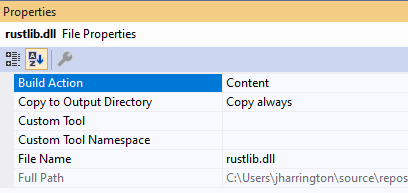
The new Row object can be used to retrieve a column by its index or by its name.The new Select iterator can be created directly from Connection but it can also be created from a statement instead (using the From/ Into traits).Secondly, this iterator yields "row" objects that can be used to retrieve any type of value and not just strings. This new select() function is different as it does return an object that implements Iterator. It does not return an iterator which forces the user to mutate variables outside the closure.Unfortunately iterate() has two difficult constraints: There is already the function iterate() which allows doing a SELECT query easily. You can use the docker volume inspect command.This is a proposal to add a function to the API of Connection to make SELECT queries more easily. Dive into the volumeĪ lot of people frequently ask “Where is Docker storing my data when I use a volume?” If you want to know, Go ahead and remove the container when you’re done checking out your list. You should see your items still in your list. Start a new container using the same steps from above. Use Docker Desktop or docker ps to get the ID and then docker rm -f to remove it. Stop and remove the container for the todo app. Once the container starts up, open the app and add a few items to your todo list. In Host path, specify the name of the volume, todo-db.Use the search filter to filter images and only show Local images. In the search box, specify the container name, getting-started.In the search window, select the Images tab.

Select the search box at the top of Docker Desktop.

RUST SQLITE EXAMPLE HOW TO
You’ll learn how to switch this to a different database engine later. While this isn’t the best for large-scale applications, If you’re not familiar with SQLite, no worries! It’s simply a relational database that stores all the data in a single file. etc/todos/todo.db in the container’s filesystem. Persist the todo dataīy default, the todo app stores its data in a SQLite database at You’ll eventually use both, but you’ll start with volume mounts. If you mount that same directory across container restarts, you’d see If you mount a directory in the container, changes in thatĭirectory are also seen on the host machine. Volumes provide the ability to connect specific filesystem paths of With volumes, you can change all of this. While containers can create, update, and delete files, those changes are lost when you remove the containerĪnd Docker isolates all changes to that container. With the previous experiment, you saw that each container starts from the image definition each time it starts. Go ahead and remove the first container using the docker rm -f command. Look, there’s no data.txt file there! That’s because it was written to the scratch space for

In this case the command lists the files in the root directory of the container.


 0 kommentar(er)
0 kommentar(er)
